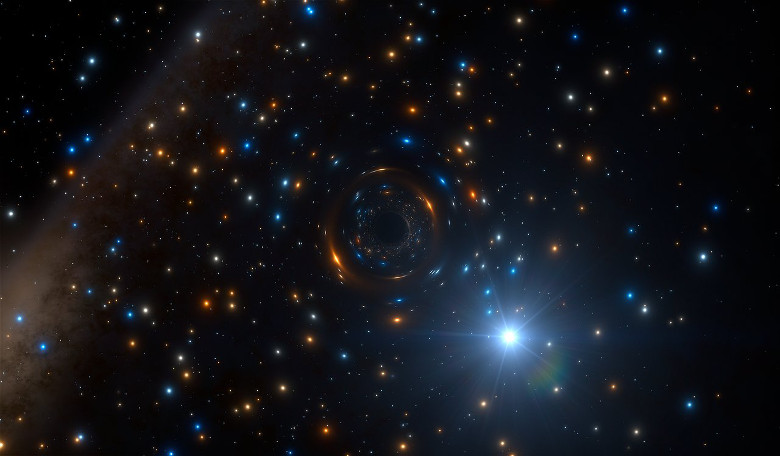Astronomers studying the strange behaviour of a star in the cluster NGC 3201 have found an even more unusual reason for its mysterious movements – the gravitational pull of an invisible black hole with about four times the mass of the Sun. This is the first detection of an inactive black hole found in a globular cluster, that has such a very low mass.
Globular star clusters are among the oldest known stellar systems in the Universe and as the name suggests these clusters are huge spheres that contain tens of thousands of stars. The clusters are known to orbit most galaxies and more than 150 are currently known to belong to our galaxy, the Milky Way.
The cluster in question at the heart of this discovery is located in the southern constellation of Vela (The Salis). While observing the cluster with ESO’s MUSE instrument on the Very Large Telescope in Chile, astronomers noticed that one particular star that is on its way to becoming a red giant, was being flung backwards and forwards at speeds of several hundred thousand kilometres per hour. Not only that, but it occurred in a pattern repeated every 167 days.
“It was orbiting something that was completely invisible, which had a mass more than four times the Sun — this could only be a black hole! The first one found in a globular cluster by directly observing its gravitational pull,” said lead author Benjamin Giesers from Georg-August-Universität Göttingen, Germany, who was intrigued enough to investigate further.
Black holes are notoriously difficult to detect, as light is not able to escape from their cores due to the tremendous amount of gravity the black hole creates. Instead the primary method of detecting a black hole is through observations of radio or X-ray emissions coming from hot material around them.
However, not all black holes interact with hot matter surrounding them, therefore radiation will not always be emitted. In this case, the black hole is classed as “inactive” and it becomes even more invisible than normal, so another method of detection is required to find them.
This detection of an inactive stellar-mass black hole found in a globular cluster is the first to be found by directly detecting its gravitational pull on a nearby star.
The relationship between globular star clusters and black holes is an intriguing one and it is thought that because of their large masses and great ages, the star clusters produce a large number of stellar-mass black holes, that are created when massive stars within them exploded and collapsed over the long lifetime of the cluster. However not a lot is known about what really happens in these systems.
“Until recently, it was assumed that almost all black holes would disappear from globular clusters after a short time and that systems like this should not even exist! But clearly this is not the case — our discovery is the first direct detection of the gravitational effects of a stellar-mass black hole in a globular cluster. This finding helps in understanding the formation of globular clusters and the evolution of black holes and binary systems — vital in the context of understanding gravitational wave sources,” Giesers concludes.











